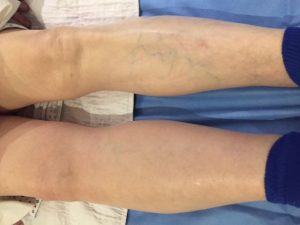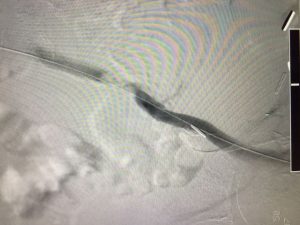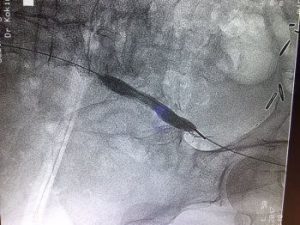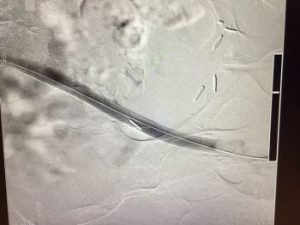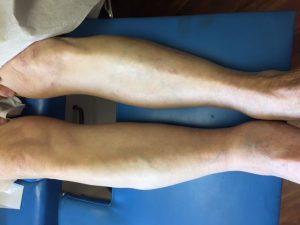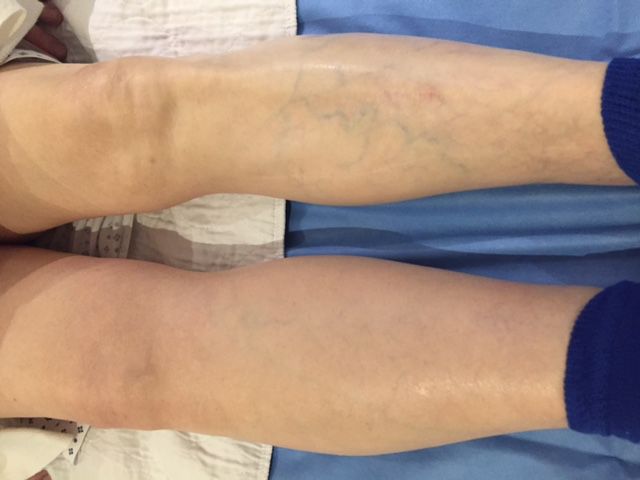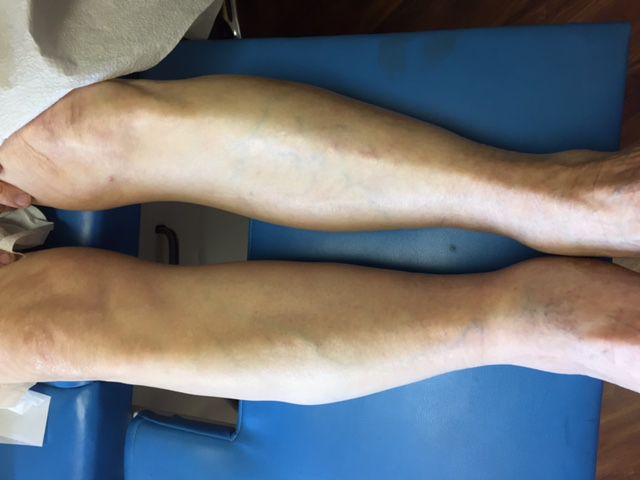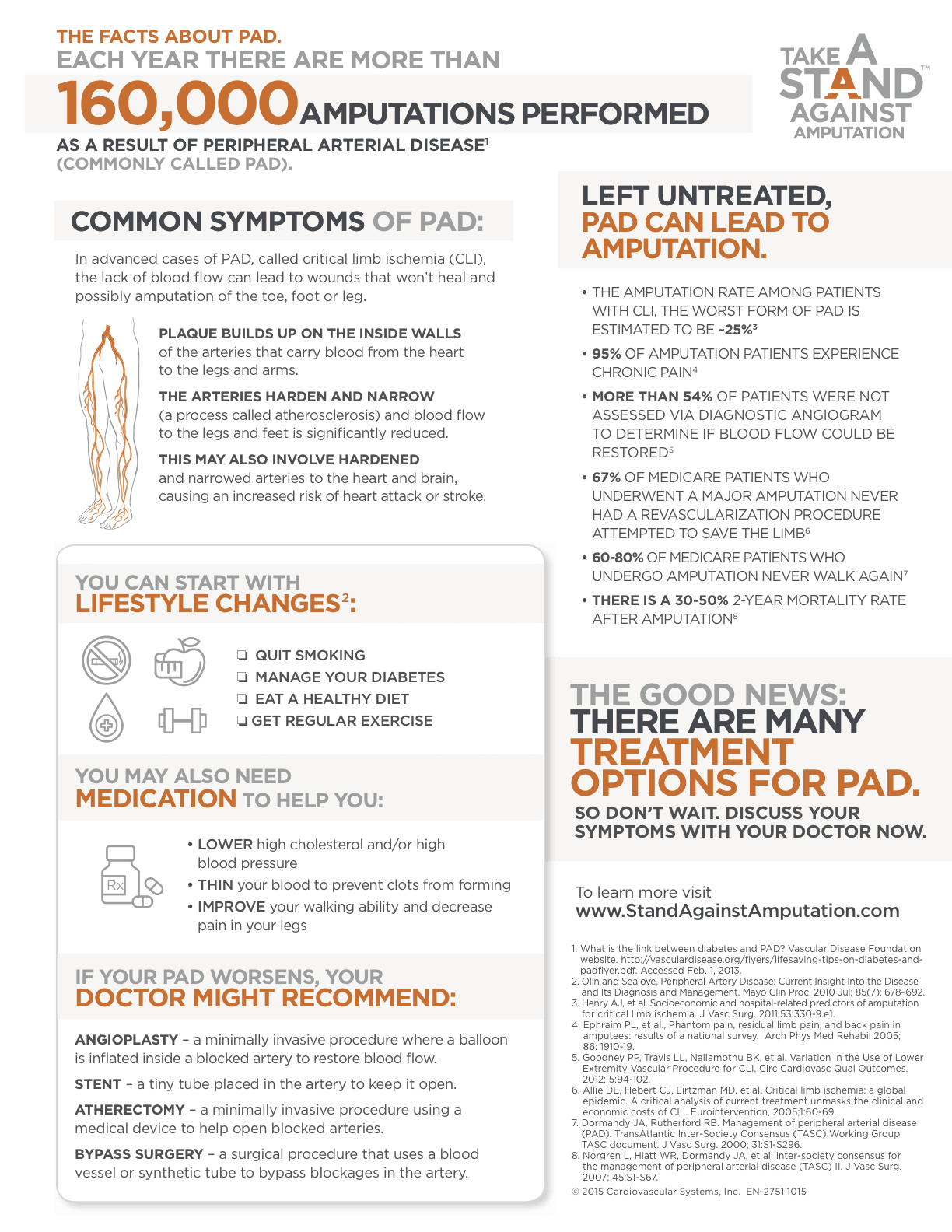Last weekend, during my daughter’s water polo game, I noticed the coach for the opposing team was limping and had a very swollen left leg. With a closer look I realized he had the hyperpigmentation (skin darkening) of chronic venous disease and ugly bulging varicose veins easily the size of my thumb all over the inside of his calves. I decided to go ask him about them, as they looked awful, the man was clearly in pain, and I was concerned. After a brief conversation with the coach, where he told me various “old wives’ tales” it dawned on me that he probably wasn’t alone thinking the way he did so I thought I should post this blog in an attempt to clear up these ten common misconceptions about varicose veins. Here goes:
“Varicose veins are simply a cosmetic problem”
About half of the patients we see in our practice for varicose veins complain about the pain they experience because of their veins. Because these patients are experiencing pain and suffering, many times varicose veins are categorized as a Medical condition and not just a cosmetic issue. This is especially true if they are accompanied by leg aching, throbbing, swelling, or discoloration. Venous disease affects about 40 million people in the United States and about 1 million end up with ulcers that are painful and difficult to heal. As a medical condition, depending on the severity of a patients condition, insurance often covers for the procedure to be done. That way, patients are not forced to pay out of pocket to rid themselves of their painful and ugly veins.
“Varicose veins can cause strokes, heart attacks, or gangrene”
Although varicose veins are a circulatory problem, the blood vessels causing strokes, heart attacks, and gangrene are arteries not veins. The patient profile of patients suffering from vein issues (women, multiple pregnancies, family history, standing occupation) is very different from those that get arterial problems (smokers, diabetics, patients with high blood pressure or cholesterol). Because of this, patients suffering from varicose veins should consult with their physicians to determine if this problem is accompanied by any underlying,and potentially more serious, circulatory issues
“Only women get varicose veins”
Although venous disease is more common in women, about 40% of our patients are men. Unfortunately, men tend to present with more advanced disease or longer standing symptoms.
“I have had my veins just like this for twenty years”
Venous disease does progress if not treated and currently there are several outpatient office procedures that can be done with excellent results and low risks
“It is not worth treating varicose veins because they just come back”
The treatment of venous insufficiency is one of the more successful treatments in medicine, as long as the underlying cause is treated- ie. the underlying veins that have the leaky valves. In the old days, patients were treated simply with removal of the bulgy veins. Because the underlying saphenous veins that had leaky valves were not treated, the bulgy veins come back. Now that we do ultrasound to “map out” the diseased veins, the recurrence rate should only be about 10% at 10 years.
“Insurance will not cover any varicose vein treatment”
Although insurance companies have absolutely made the criteria for coverage for venous disease much more difficult over the last ten years, most patients who do have leaky valves in their underlying valves are covered. Sclerotherapy for spider veins and the simple removal of bulgy veins for appearance are almost never covered today.
“Varicose veins are “surplus parts” that I might need someday”
They are abnormal blood vessels that develop usually because there is an underlying medical problem- vein valve failure or “leakiness”. The underlying greater saphenous vein, that usually is the one that has the leaky valves, is sometimes used in open-heart surgery or arterial vascular bypass surgery. However, today, it is not commonly used as those operations have been replaced to a large extent by less invasive procedures using balloons and stents.
“ Varicose veins are just part of getting old as is my leg pain”
Although it is true that there is an increase in the incidence of varicose veins as one gets older (one study found that 75% of women over the age of 65 had venous issues), it is NOT a normal part of aging to feel heaviness, aching, or throbbing in the legs. It is important to go have those symptoms evaluated by a vascular surgeon as often it can be easily treated.
“Treatment of my varicose veins will lay me up for weeks”
Until about 15 years ago, the main treatment for varicose veins was a difficult procedure called vein stripping. This was generally done under general anesthesia, in a hospital where one was admitted, with two moderate sized incisions in the groin and at the ankle. It generally took patients several weeks to recover. The field was revolutionized by the introduction of endovenous ablation, which currently is an office procedure, done under local anesthesia where the patient usually has NO post-operative pain. Most patients return to all of their normal activities with 24-48 hours.
“You have to have bulging veins to have a vein problem”
Many patients who present with heavy, aching or swollen legs actually do not have bulging varicose veins but are found to have a problem on evaluation. In order to diagnose venous disease, it is important to have a VENOUS REFLUX ULTRASOUND. This is not the same as a vein ultrasound to look for blood clots that primary care doctors often order at hospitals. It is critical to have this test done at an ICAVL accredited laboratory as it is extremely technologist dependent. A good exam will take about 30 minutes per leg and will examine veins with the patient in a standing or head slanted up position from the groin to the ankle.
